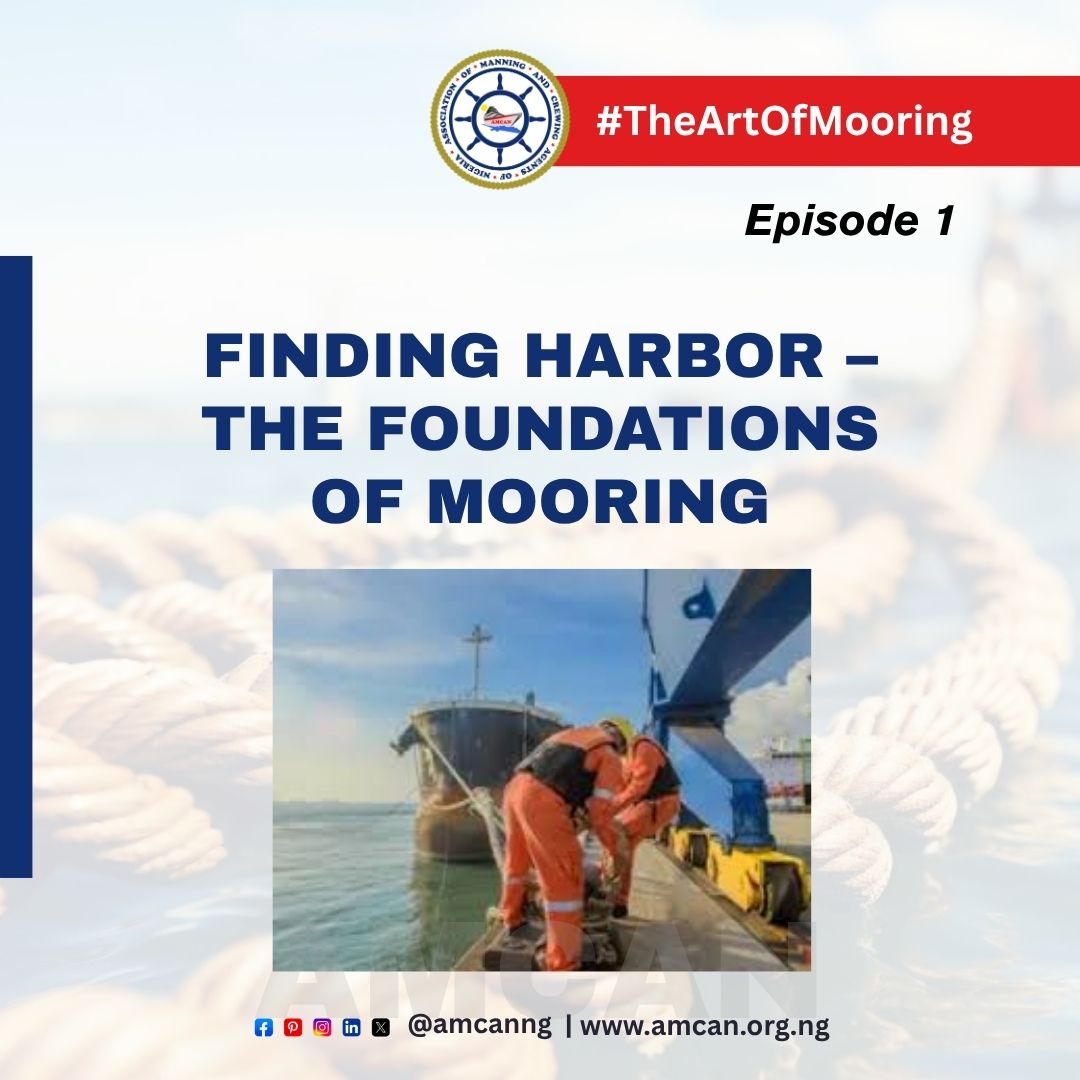There’s a certain quiet tension that fills the air when a vessel approaches port. The engine hums softer, crew members take their positions, and every eye focuses on one task, bringing the ship safely alongside. It’s one of those moments that separate the trained from the uncertain, the prepared from the panicked. This is mooring, the fundamental skill that every seafarer, no matter their rank, must understand and respect.
What is Mooring, Really?
Mooring is more than just tying ropes to a bollard. It’s the art and science of securing a vessel safely to a fixed point, whether that’s a quay, jetty, buoy, or another ship. The goal? To ensure the vessel remains steady despite wind, current, and tide.
When you moor a ship, you’re engaging with powerful forces - gravity, momentum, friction, and tension. Even a slight miscalculation in rope angle or timing can cause a vessel to drift, snap lines, or collide with the berth. That’s why mooring is not just a duty; it’s a discipline.
How Ancient Mariners Did It
Long before winches, bollards, and nylon ropes, mariners of old had their own ways of keeping vessels secure. In ancient times, sailors used hemp ropes and wooden stakes to tie up their ships near harbors. They often relied on anchors dropped close to shore or even stones used as weights to keep vessels steady against the current.
Interestingly, much of what we know today evolved from these early practices. The concept of using multiple lines (fore, aft, and spring lines) comes directly from early seafarers’ understanding that ships needed balance and resistance from more than one point. They knew that a vessel, left unchecked, would always follow the pull of the wind or tide.
Today, while we use advanced materials, powered winches, and precise tension meters, the principles remain the same - balance, control, and safety.
Understanding the Forces at Play
Every time you moor a vessel, you’re managing an invisible but powerful interaction of forces. Let’s break it down:
1. Wind:
Even a moderate wind can push a ship sideways, especially those with high freeboards. The stronger the gust, the more force on your mooring lines.
2. Current:
Water flow beneath the hull creates resistance and can shift the vessel’s heading, particularly in rivers or tidal ports.
3. Tide:
As the tide rises or falls, tension changes on the lines. Too tight, and they may snap. Too loose, and the ship may drift.
4. Propeller Wash & Momentum:
When maneuvering, the vessel’s propeller creates turbulence that can affect the vessel’s position. Knowing when to cut the engine and let inertia do its work is part of the skill.
5. Line Angles:
The way lines are led - fore, aft, breast, or spring - determines how the ship resists motion. Each has its own job, and the wrong arrangement can make the vessel unstable at berth.
The Human Factor
Machines can help, but mooring is still a human art. A skilled deckhand can read the vessel’s motion, sense the strain on a rope, and know when to slack or heave in. Communication between the deck team and bridge is vital. A single unclear order or late response can make the difference between a smooth berthing and a dangerous one.
In Nigerian ports, from Apapa to Bonny, Warri to Onne, environmental conditions vary widely. River currents, tidal differences, and berth structures differ from one port to another. That’s why local knowledge and teamwork are priceless assets.
Common Mooring Lines and Their Functions
To understand the foundations, every cadet must know the basic line configurations:
*Head Line: Keeps the vessel from moving backward.
*Stern Line: Prevents forward motion.
*Breast Line: Holds the vessel close to the berth.
*Spring Lines (Forward and Aft): Prevent longitudinal movement along the quay.
Each of these works together to keep the vessel secure in all conditions.
Safety: The Core of Mooring
The mooring deck is one of the most hazardous areas onboard. Many maritime accidents occur here due to snap-back zones, poor communication, or fatigue. Every cadet should remember these key safety principles:
* Never stand in a bight or loop of rope.
* Always know your snap-back zones.
* Wear proper PPE; gloves, helmet, and safety boots.
* Keep constant communication with the bridge team.
* Never turn your back on a live line under tension.
Safety is not optional; it’s the seamanship that saves lives.
Why Mooring is the Foundation of Seamanship
For every Nigerian cadet stepping into maritime life, mastering mooring is mastering control. It’s the final moment of every voyage and the first skill that defines your competence. Every officer started on that mooring deck, learning the ropes literally.
Whether you’re on a tanker, container ship, or offshore support vessel, the principles remain universal. The more you understand them, the more respect you earn on deck.
A Final Word: Finding Your Harbor
Mooring isn’t just about securing a vessel; it’s about securing yourself in this career. It’s a lesson in patience, coordination, and respect for nature’s forces. Every successful mooring is a reminder that even the biggest ships obey the laws of balance, teamwork, and timing.
So, cadet when you next hear “Stand by to moor!”, remember: you’re not just tying lines. You’re performing the oldest maritime ritual, bringing your vessel home.
Coming Up Next:
Episode 2: Lines, Knots, and Hardware: The Mooring Toolkit.
We’ll explore every essential tool of the trade, from rope selection and knot mastery to winch operation and maintenance tips.
#MooringSeries #NigerianSeafarers #DeckCadet #MaritimeTraining #SeafarerEducation #Seamanship #ShipHandling #MarineSafety #NIMASA #CadetReadyToSail


Leave a comment